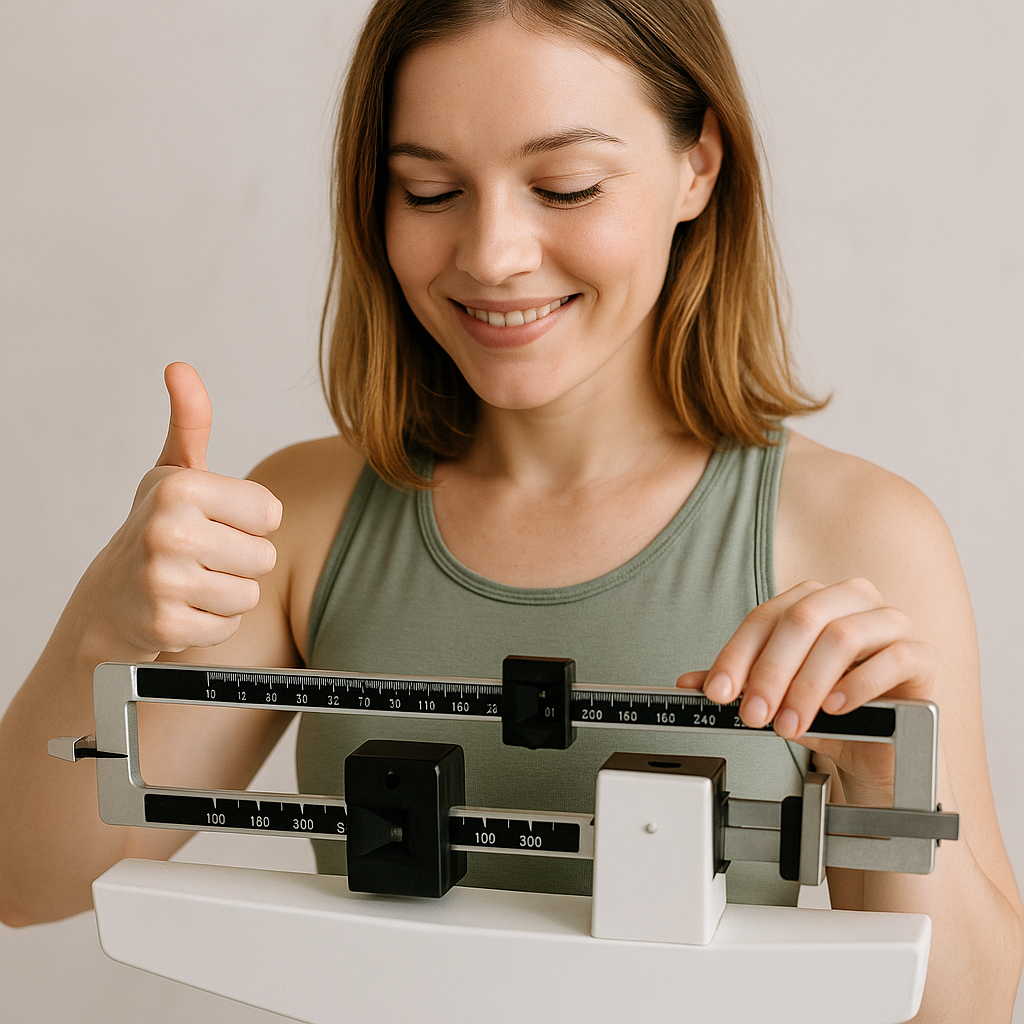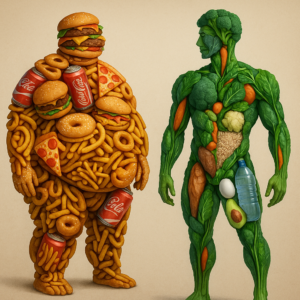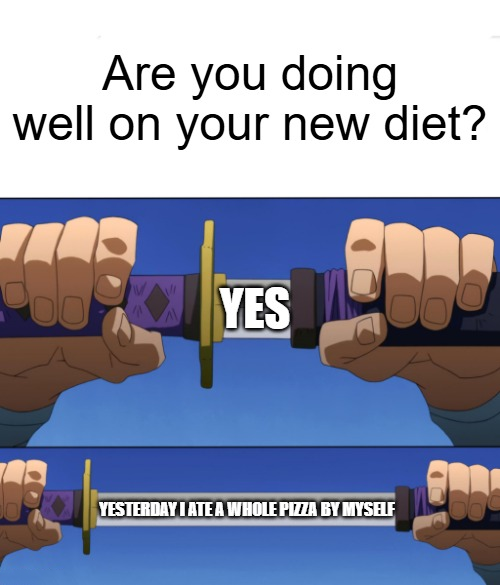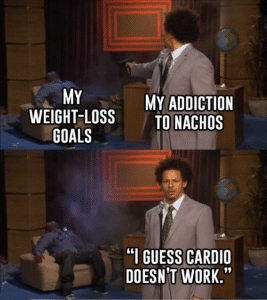
How do you lose weight? Let’s cut through the noise.
While there are a million tips and tricks out there, it all boils down to four building blocks:
- Consume Fewer Calories Than You Burn
- Eat Protein and Fiber (Veggies)
- Prioritize Micronutrients
- Exercise
That’s it. If you want to dig deeper, check out our comprehensive weight-loss guide. Learn details about each building block below.
1. Consume Fewer Calories Than You Burn
Your body burns calories every day just to keep you alive—breathing, thinking, digesting, moving. A calorie is a unit of energy. According to the law of thermodynamics, energy can’t be created or destroyed—only converted. So when you eat food, your body either burns that energy to power your life or stores it for later (usually as fat).
-
Eat more calories than you burn? You gain weight.
-
Eat fewer calories than you burn? You lose weight.
When you’re in a calorie deficit, your body uses its stored energy (body fat) to power your day. That’s how weight loss happens.
Not sure how many calories your body burns in a day? Use our free calculator to find out.
2. Eat Protein and Fiber (Veggies)
When you lose weight, your body doesn’t just burn fat—it can also burn muscle. To protect that muscle and encourage fat loss, you need to do two things: eat enough protein and lift weights.

Protein helps you:
-
Maintain muscle mass during weight loss
-
Burn more fat
-
Feel full longer
In fact, a University of Illinois study found that people on high-protein, low-calorie diets were more likely to stick to their goals and keep the weight off.
We recommend 0.7–1 gram of protein per pound of your goal body weight, or roughly 40% of your daily calories during weight loss. If your goal weight is 185 pounds, aim for 130–185 grams of protein per day.
Need help with the math? This calculator makes it easy, it’ll tell you precisely how many calories to consume a day and how many grams of protein. Need food ideas? This blog post lists high-protein foods you’ll actually enjoy.
As for fiber… think: veggies.
Veggies make you feel fuller for longer. They aren’t very calorie-dense, so you can eat a lot of them. At HealthKickHQ, here’s what we recommend:
-
Aim for ≥ 10 g of fiber per 1,000 kcal you eat.
-
1,600 kcal diet → minimum ~16 g fiber
-
2,200 kcal diet → minimum ~22 g fiber
-
That usually translates to 3–5 cups of non-starchy veg plus fruit, beans, or seeds.
-
-
If it’s helpful: Think in “cups” not calories. “Half your plate veggies” at lunch and dinner + one big salad or green smoothie usually lands you in the sweet spot (300–450 kcal, 20–30 g fiber) without painstaking calorie math.
3. Prioritize Micronutrients
Calories drive weight loss, but micronutrients determine how you feel during that process.
Micronutrients (vitamins and minerals) support your immune system, energy, sleep, mood, and recovery. If you’re constantly tired or foggy on a diet, it might not be your calorie count—it might be a lack of nutrients.
Get your micronutrients from real food:
-
Fruits (especially berries)
-
Vegetables
-
Lean meats
-
Eggs (egg-whites are packed with protein, egg yolks are packed with micronutrients. Eat a mix, maybe an an egg to 2-3 egg whites)
-
Nuts and seeds
-
Whole grains
We also recommend a daily multivitamin to help cover your bases.
If you want to feel great while you lose weight, it’s not just about how much you eat—it’s about what you eat.
4. Exercise
You don’t have to exercise to lose weight—but if you want to feel good, think clearly, and speed up your results, it’s a powerful tool.
There are two core types of exercise: cardio and weight lifting.

1. Cardio – cardio burns more calories per workout.
-
A 165-lb man burns ~300 calories/hour lifting weights.
-
That same man burns ~700 calories/hour running.
Cardio improves your mood and can be fun. Like going for a daily walk outside? THAT’S CARDIO. Enjoy playing basketball? THAT’S CARDIO. Like to dance? You’ve got it: CARDIO.
Cardio speeds up the calorie deficit, and it’s a great addition to a weight-loss journey.
2. Weight lifting – Weight lifting is another fabulous addition to your weight-loss plan.
We already discussed how a high-protein diet can help maintain muscle mass during weight loss. Lifting weights also can help maintain or even gain muscle when you’re in a calorie-deficit. Weight lifting can help you shape your body the way you want it, so you look better during and after the weight loss.
Building muscle also increases your resting metabolic rate (the number of calories you burn a day without moving/eating). It gives you energy and increases your capacity to expend energy in your life every day.
Conclusion
Weight loss isn’t complicated—but it does take work.
If you stick to these 4 building blocks, you will see progress:
-
- Consume Fewer Calories Than You Burn
- Eat Protein and Fiber (Veggies)
- Prioritize Micronutrients
- Exercise
Ready to take action? Check out our free, comprehensive guide and get started today. 👇👇👇
